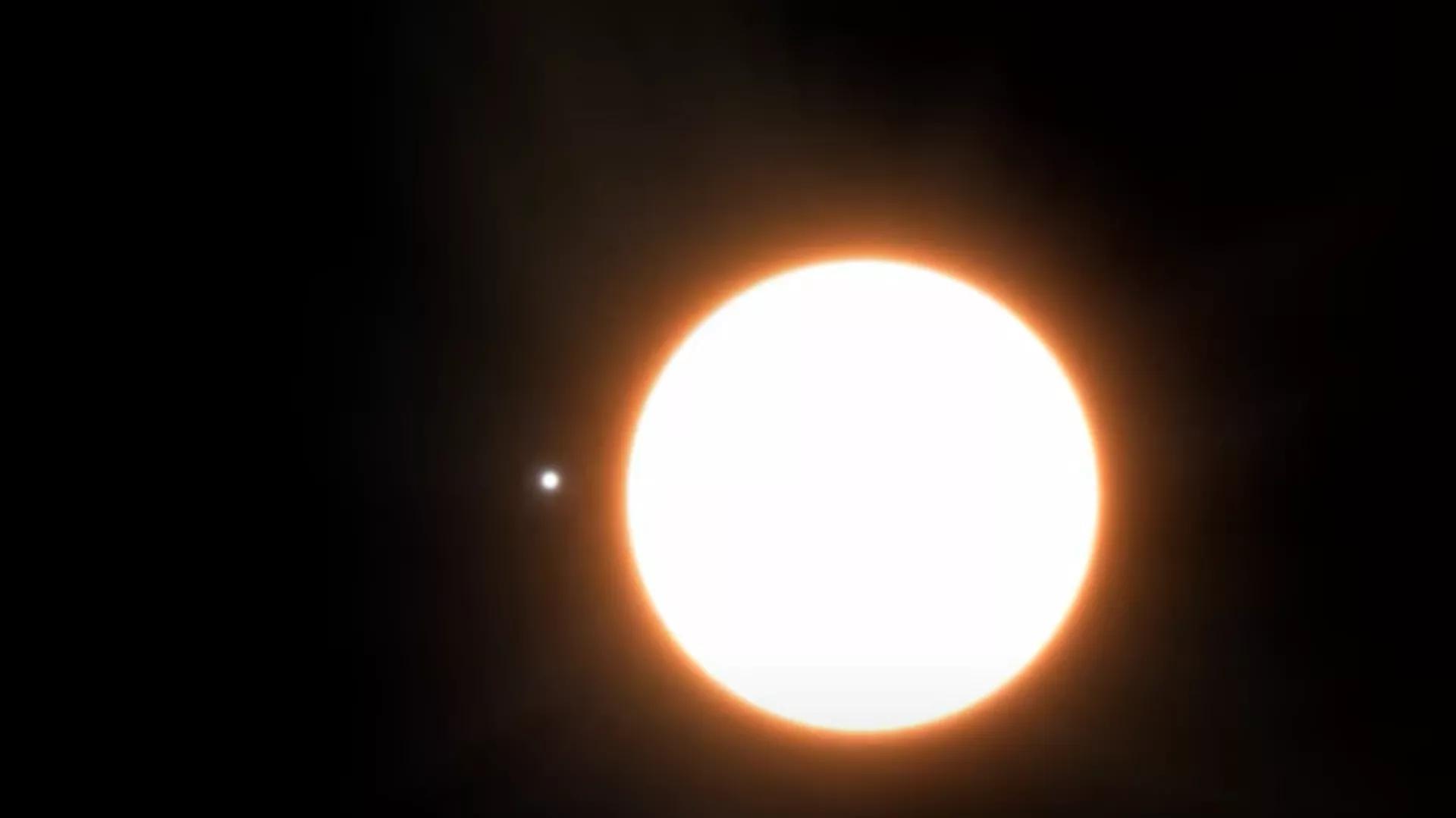Africa-Press – Lesotho. The newly found scorching world, which is situated 262 light-years from Earth, orbits its host star every 19 hours and possesses reflective metallic clouds composed of silicates and metals like titanium. Scientists have identified an ultrahot exoplanet named LTT9779b as the brightest exoplanet ever found, a new study has revealed.
The discovery was initially made by NASA’s TESS mission in 2020, and follow-up observations from the European Southern Observatory (ESO) in Chile prompted further investigation by the European Space Agency’s Cheops mission.
Cheops, the Characterising Exoplanet Satellite, conducted high-precision measurements that revealed LTT9779b reflects a remarkable 80% of the light emitted by its host star, surpassing the shine of Venus in our solar system.
While Venus reflects about 75% of the sun’s light, Earth reflects a mere 30%. The findings describe LTT9779b as the largest known “mirror” in the universe. Its high reflectivity can be attributed to the presence of metallic clouds, primarily composed of silicates and titanium.
Astronomer James Jenkins, co-author of the study and affiliated with the Diego Portales University in Santiago, Chile, likened the planet to a burning world, situated close to its star. He noted the celestial body was fitted with heavy clouds of metals suspended in its atmosphere that resulted in titanium droplets raining down.
The exceptional albedo, or fraction of reflected light, exhibited by LTT9779b, is surprising given the side of the exoplanet facing its star experiences temperatures of approximately 2,000°C. Generally, temperatures above 100°C are too hot for water clouds to form, let alone clouds composed of metal or glass.
Vivien Parmentier, a researcher at the Observatory of Côte d’Azur in France and co-author of the study, explained that the cloud formation on LTT9779b can be understood through an analogy with condensation in a bathroom after a hot shower.
Beyond its impressive reflectivity, LTT9779b is significant due to its size and proximity to its host star. Roughly the size of Neptune, it belongs to a class of planets known as “ultrahot Neptunes” and resides in what astronomers call the “hot desert of Neptune.
Sergio Hoyer, the first author of the study and a post-doctoral researcher at the Marseille Astrophysics Laboratory in France, involved in the Cheops mission, explained that the reflective clouds play a crucial role in maintaining the planet’s temperature and preventing it from evaporating.
Additionally, the metallic nature of the clouds adds weight to the planet, making it more resistant to atmospheric erosion caused by stellar winds. The findings were published in the journal Astronomy & Astrophysics.
For More News And Analysis About Lesotho Follow Africa-Press






